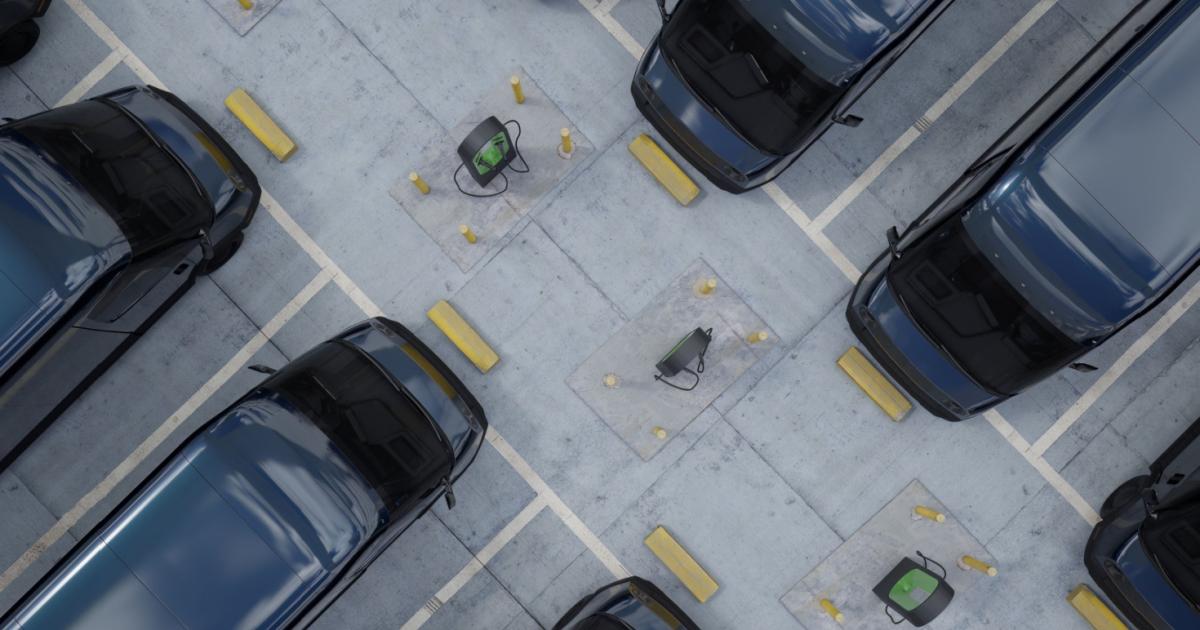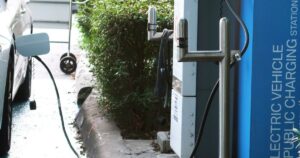
Sysco, Genentech and Amazon are relatively early movers in fleet electrification, and insiders in those efforts said buy-in from corporate leadership was essential in making that happen. Yet even supported by the C-suite and aggressive company-wide targets to decarbonize transportation, the people in charge of transforming big fleets are generally embarking on a new journey that lacks a road map.
Several professionals leading fleet electrification initiatives for these companies recently outlined ways their counterparts at other organizations can start or accelerate their own strategies. Their remarks came during interviews at Electrify 23, a virtual event presented by GreenBiz on Aug. 10.
1. Support fleet managers and mechanics
As your company braces for sweeping changes to its fleet operations, step into the shoes of the professionals executing the work, urged Jania Fox, electrification manager at biotechnology company Genentech, which is managing four initiatives supporting its goal of zero transportation emissions by 2030. These include converting a fleet of field sales 1,600 vehicles to electricity, which is 25 percent complete, she said. In addition, the company has a 110-vehicle site fleet including passenger vans and delivery trucks; more than 70 motor coaches and eight shuttles for its South San Francisco campus; and some 1,000 employee-owned EVs, for which it provides home-based chargers.
"Fleet managers are already really busy, but when you just dump figuring out electrification on top of what they're already doing, it’s a lot," Fox said, adding that dedicated personnel should help support them, which is part of her job. "So many new systems and tools and devices that need to be layered on top of the existing systems."
Stephane Fosso, director of fleet technology and electrification at Sysco, advocated for anticipating the needs of the mechanics handling the predictive and corrective maintenance of the vehicles, equipment and infrastructure. Early planning at what he called the "Amazon of the food industry" involved company leadership along with the construction and fleet electrification teams, with "all the bolts and nuts all working together," he said.
Sysco’s science-based climate goal for 2030 of reducing global direct emissions by 27.5 percent includes electrifying 35 percent of its fleet, which comprises semi-trucks — 2,800 targeted for conversion in the U.S. — as well as refrigerated box trucks and trailers.
2. Gather on-the-road experience
Amazon seeks to roll out 100,000 custom electric vans by 2030, supporting its net-zero carbon goal by 2040. So far, 5,000 electric vans, scratch-built with partner Rivian, deliver goods across the United States.
Tom Chempananical, director of Amazon's global last-mile fleet, said that if he were to start over today, he would gather as much real-world, on-the road experience as possible because simulations can only go so far.
"We tend to think about battery and range as something you can calculate, but it’s driven by the environment you’re driving in," he said. For instance, a 200-mile range in Minneapolis might shrink to 130 miles in the three-digit temperatures of Phoenix.
3. Build relationships early to get the tech
How can you secure the necessary vehicles and supporting technologies years ahead of deadline? Most cannot tailor-make vehicles a la Amazon and Rivian.
Sysco, which began electrifying its semi-trucks around 2017, participates heavily in industry consortia and meets with vendors such as Volvo and Freightliner, Fosso said. The food service company signed a letter of intent with Daimler to produce 800 trucks by 2026, and it’s entertaining the same idea to secure its electrified trailers and box trucks, he added.
"It’s all about partnerships, locking in volumes, making sure they understand we’re serious, and building strong relationships and partnerships," Fosso said.
4. Look at the full ecosystem
Consider more than the vehicle, Fosso added, explaining some missteps made by the people responsible for electrifying a fleet. "They purchase the truck and then they say, ‘Oops what charger do I use, how do I operate that? Oops, where shall I send this truck?’"
Instead, consider how all the moving parts of an electrified fleet work together, he said. "You’ve got to be really laser-tight-focused on what type of asset makes sense for that operation. How do I maximize that choice of the asset with my charging infrastructure, and how do I maximize those two into my operation so that my total overall cost becomes really what the company can sustain?"
5. Walk the tightrope of fine-tuning
Once you’ve figured out which vehicles and systems work and play well together, and which personnel will take care of them, prepare for everything to change as technology evolves — which may happen more quickly than you expect, according to the experts from Sysco, Genentech and Amazon.
"You cannot say, build out a lot and lay conduit and have an architecture," Fox said. "You have to also think about: OK, what are the buses? ...What kinds of chargers are gonna work with this? What's the architecture of the chargers?"
When it came time to expand an electric bus depot that had launched several years earlier, for example, Genentech found that technology had changed so rapidly that it could no longer rely on the original equipment and infrastructure.
"You’ve got to walk that tightrope between bringing all those pieces together and being willing to switch massively when you get new information, new technology," Fox said.
- SEO Powered Content & PR Distribution. Get Amplified Today.
- PlatoData.Network Vertical Generative Ai. Empower Yourself. Access Here.
- PlatoAiStream. Web3 Intelligence. Knowledge Amplified. Access Here.
- PlatoESG. Automotive / EVs, Carbon, CleanTech, Energy, Environment, Solar, Waste Management. Access Here.
- PlatoHealth. Biotech and Clinical Trials Intelligence. Access Here.
- ChartPrime. Elevate your Trading Game with ChartPrime. Access Here.
- BlockOffsets. Modernizing Environmental Offset Ownership. Access Here.
- Source: https://www.greenbiz.com/article/sysco-genentech-and-amazon-share-5-power-moves-electrifying-fleets
- :has
- :is
- :where
- 000
- 1
- 10
- 100
- 2017
- 2026
- 2030
- 25
- 27
- 35 percent
- 70
- a
- About
- accelerate
- According
- across
- added
- adding
- addition
- aggressive
- ahead
- All
- along
- already
- also
- Amazon
- an
- and
- and infrastructure
- anticipating
- architecture
- ARE
- around
- AS
- asset
- At
- Aug
- battery
- BE
- because
- becomes
- began
- being
- between
- Big
- biotechnology
- Box
- Bringing
- build
- Building
- bus
- Buses
- busy
- but
- by
- C-suite
- calculate
- called
- came
- Campus
- CAN
- cannot
- carbon
- care
- change
- changed
- Changes
- charge
- charging
- choice
- Climate
- Companies
- company
- complete
- comprises
- Consider
- consortia
- construction
- Conversion
- converting
- Corporate
- Cost
- could
- custom
- Daimler
- dedicated
- deliver
- delivery
- Devices
- direct
- Director
- do
- doing
- driven
- driving
- dump
- during
- Earlier
- Early
- efforts
- Electric
- electricity
- electrifying
- Emissions
- entertaining
- Environment
- equipment
- essential
- Ether (ETH)
- Even
- Event
- everything
- evolves
- evs
- example
- executing
- existing
- Expand
- expect
- experience
- experts
- explaining
- far
- field
- figured
- FLEET
- food
- food service
- For
- found
- four
- fox
- Francisco
- from
- full
- gather
- generally
- get
- Global
- Go
- goal
- goods
- had
- Handling
- happen
- Have
- he
- heavily
- help
- her
- How
- HTTPS
- i
- idea
- if
- in
- include
- includes
- Including
- industry
- information
- Infrastructure
- initiatives
- instance
- intent
- Interviews
- into
- involved
- IT
- ITS
- Job
- journey
- jpg
- just
- launched
- lay
- layered
- Leadership
- leading
- letter
- longer
- Look
- Lot
- made
- maintenance
- MAKES
- Making
- manager
- Managers
- managing
- many
- map
- massively
- Maximize
- May..
- mechanics
- Meets
- might
- more
- most
- Motor
- Movers
- moves
- moving
- much
- my
- necessary
- Need
- needs
- net-zero
- New
- no
- of
- on
- only
- operate
- operation
- Operations
- or
- organizations
- original
- Other
- out
- outlined
- over
- overall
- own
- part
- participates
- partner
- partnerships
- parts
- People
- percent
- Personnel
- phoenix
- pieces
- planning
- plato
- Plato Data Intelligence
- PlatoData
- Play
- possible
- power
- Prepare
- presented
- produce
- professionals
- provides
- purchase
- quickly
- range
- rapidly
- RE
- real world
- really
- recently
- reducing
- Relationships
- relatively
- rely
- responsible
- rivian
- road
- Roll
- s
- Said
- sales
- same
- San
- San Francisco
- say
- secure
- Seeks
- send
- sense
- serious
- service
- several
- Share
- she
- should
- signed
- site
- So
- so Far
- some
- something
- South
- start
- States
- Step
- strategies
- strong
- such
- support
- Supported
- Supporting
- sure
- Switch
- Systems
- Take
- targeted
- targets
- teams
- Technologies
- Technology
- than
- that
- The
- their
- Them
- then
- These
- they
- think
- this
- those
- time
- to
- today
- together
- tools
- top
- Total
- transforming
- transportation
- truck
- Trucks
- two
- type
- u.s.
- understand
- United
- United States
- use
- vehicle
- Vehicles
- vendors
- Virtual
- volumes
- volvo
- was
- ways
- we
- WELL
- were
- What
- when
- which
- will
- willing
- with
- Work
- work together
- working
- would
- years
- yet
- you
- Your
- zephyrnet
- zero







